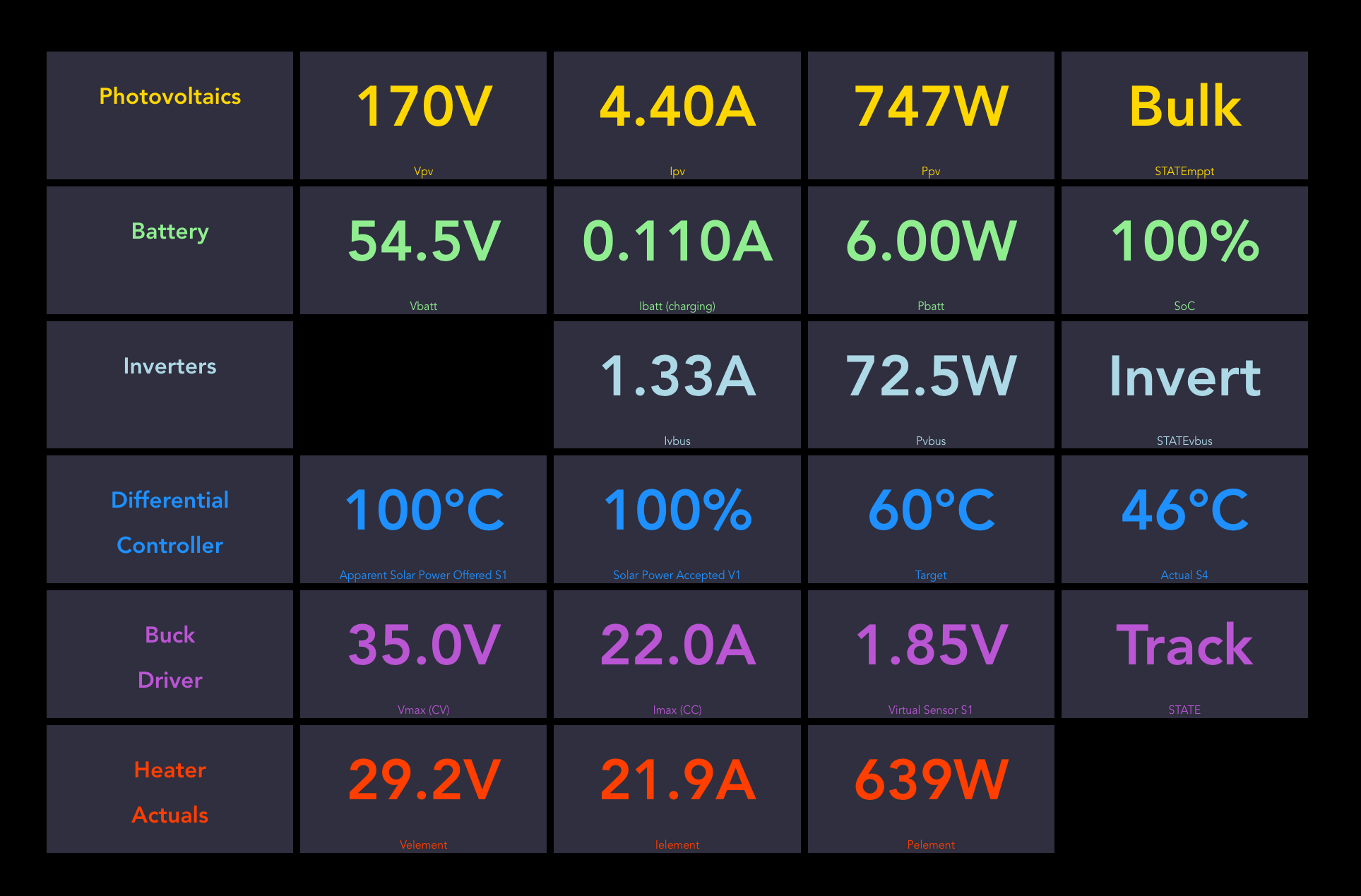Hello everybody,
I have a system composed of
- Multiplus 48v 5000;
- Victron solar charger 250/100;
- Color control GX;
- 6 pylontech batteries;
and I want to divert the excess solar power from the 48V DC bar into the 48V hot water boiler.
The diverting system worked very well when I had lead batteries and the diversion start and stop conditions were dependent on the battery voltage - the charger controlled the charging of the batteries.
After I changed the lead batteries to Pylontech batteries, the BMS controls the chargers. The problem occurs when the SOC is 100% and the BMS sets the CCL (charge current limit) to 0. At this moment, the charger no longer deliver all the available solar power.
Does anyone know a solution to divert excess solar power from the 48V bar if the charger is controlled by the battery BMS?
Thank you!

